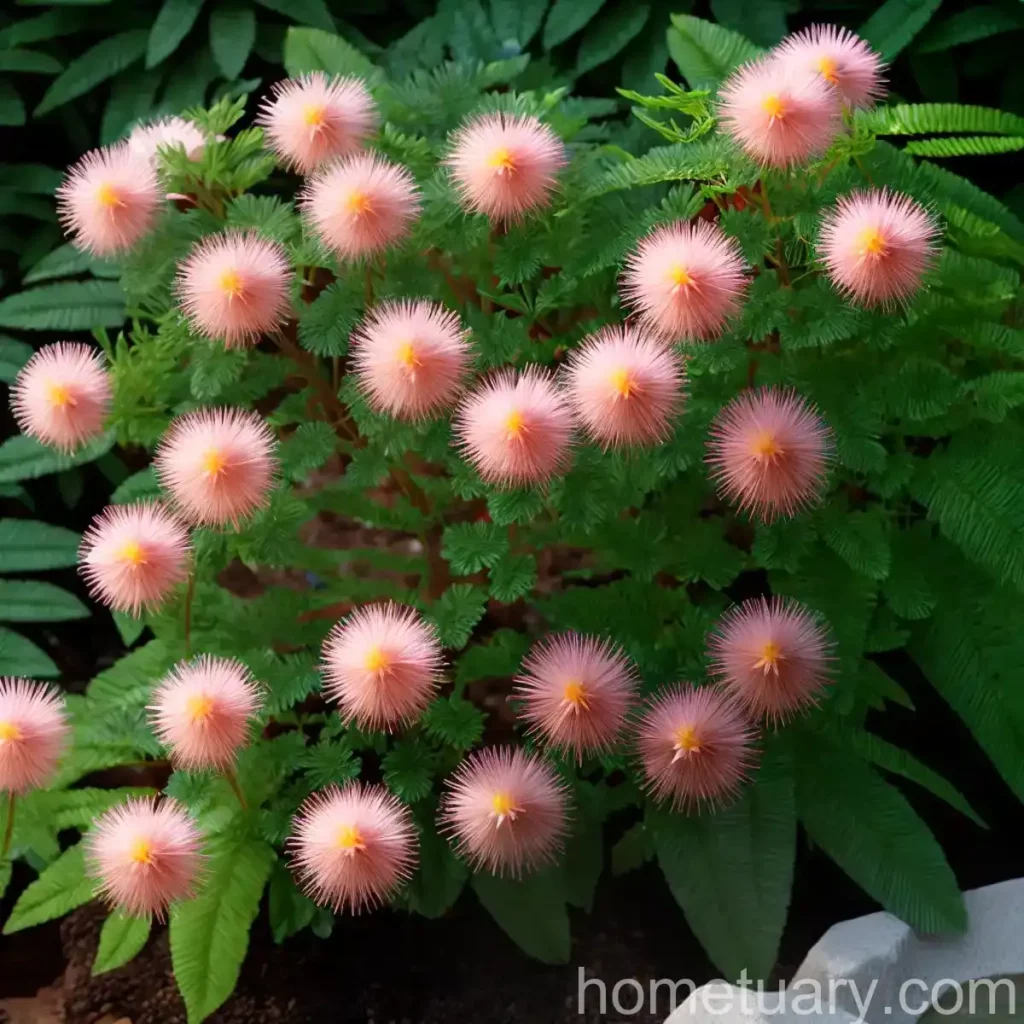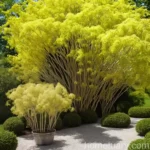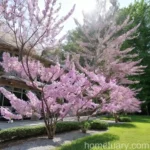The Wonder of Water Mimosa (Neptunia oleracea)
In the world of aquatic plants, few species are as fascinating and beneficial as the water mimosa, scientifically known as Neptunia oleracea. This remarkable plant, with its unique characteristics, plays a crucial role in aquatic ecosystems, water purification, and ornamental gardening. You are about to embark on a journey to understand the culture, uses, care, and ecological importance of Neptunia oleracea. By the end of this comprehensive guide, you will be equipped with the knowledge to cultivate, appreciate, and benefit from this incredible aquatic species.
What is Water Mimosa (Neptunia oleracea)?
Neptunia oleracea, commonly known as water mimosa, is a perennial aquatic plant that belongs to the Fabaceae family. This fascinating species is native to various parts of the world, including South America, Central America, the Caribbean, and other tropical and subtropical regions. Water mimosa is known for its unique adaptation to aquatic environments, making it a valuable addition to both natural ecosystems and human-controlled aquatic settings such as ponds, aquariums, and water gardens.
As a submersible and often floating plant, Neptunia oleracea has distinctive features that set it apart from other aquatic flora. Its characteristic fern-like foliage and delicate yellow flowers make it an aesthetically pleasing plant, while its ecological benefits make it an essential component of diverse aquatic habitats.
Key Takeaways – Water Mimosa (Neptunia oleracea)
Before delving into the specific aspects of water mimosa cultivation and care, it’s essential to highlight some key takeaways about Neptunia oleracea. Understanding these fundamental points will lay the foundation for the in-depth exploration that follows.
Key Takeaways:
- Neptunia oleracea is a submersible and floating aquatic plant with fern-like foliage and delicate yellow flowers.
- This species is a member of the Fabaceae family and is native to tropical and subtropical regions, including South America, Central America, and the Caribbean.
- It plays a critical role in aquatic ecosystems, serving as a habitat for aquatic species, contributing to water purification, and aiding in the restoration of natural wetlands.
- Water mimosa is an attractive addition to ornamental ponds, water gardens, and aquariums, adding aesthetic value to aquatic landscapes.
- Cultivating Neptunia oleracea requires attention to water, sunlight, soil, and propagation methods to ensure its optimal growth and health.
Now, let’s explore the various aspects that define the culture, uses, and care of water mimosa.
Culture
Understanding the culture of Neptunia oleracea is essential for successfully cultivating and appreciating this unique aquatic plant. The cultural requirements encompass various factors, from its natural habitat to its adaptation to human-controlled environments.
Natural Habitat
Neptunia oleracea thrives in its natural habitat of freshwater lakes, ponds, rivers, and wetlands in tropical and subtropical regions. This species has evolved to flourish in environments where water is a constant presence, allowing it to adapt to both submerged and floating conditions. Its ability to grow in both terrestrial and aquatic conditions makes it a versatile plant with the capacity to thrive in diverse ecosystems.
Uses
Water mimosa serves a multitude of ecological and practical purposes, making it a highly valuable plant in various contexts.
Ecological Role:
-
Habitat for Aquatic Species: Neptunia oleracea provides a habitat for a wide range of aquatic species, including fish, invertebrates, and amphibians. Its sprawling growth habit and submersible nature create a sheltered environment for aquatic organisms, contributing to the overall biodiversity of aquatic ecosystems.
-
Water Purification: This species plays a vital role in water purification, as its extensive root system aids in nutrient absorption and filters impurities from the water. By promoting water clarity and quality, Neptunia oleracea contributes to the overall health of aquatic environments.
-
Wetland Restoration: In natural wetlands, water mimosa contributes to the restoration of ecosystems by stabilizing soil, capturing sediments, and creating a conducive environment for wetland flora and fauna.
Practical Applications:
-
Ornamental Gardening: Neptunia oleracea is a popular choice for ornamental ponds, water gardens, and aquascaping due to its attractive foliage and flowers. Its aesthetics enhance the visual appeal of aquatic landscapes, making it a desirable addition to ornamental settings.
-
Erosion Control: In areas prone to soil erosion near water bodies, the dense root network of water mimosa helps stabilize the soil, mitigating the risk of erosion and contributing to the overall integrity of the surrounding landscapes.
Water
Water is a primary component of the culture and care of Neptunia oleracea, given its aquatic nature. Understanding the water requirements of this species is crucial for successful cultivation and maintenance.
Sunlight
As an aquatic plant, Neptunia oleracea thrives in environments with ample sunlight. When cultivating water mimosa, it is essential to provide it with access to direct or filtered sunlight, as this promotes optimal growth and enhances its overall health.
Fertilizer
In the aquatic environment, water mimosa obtains essential nutrients from the water and surrounding substrate. While additional fertilization may not be necessary in natural aquatic habitats, in controlled settings such as ornamental ponds and aquariums, the use of aquatic plant fertilizers can support the healthy growth of Neptunia oleracea.
Soil
Unlike terrestrial plants, Neptunia oleracea does not rely on soil for its growth and development. Its adaptation to aquatic environments means that its root system draws nutrients directly from the water and substrate, allowing it to flourish without the need for traditional soil.
Pruning
Pruning is an essential aspect of maintaining the health and aesthetics of water mimosa, particularly in managed aquatic settings.
Pruning Techniques:
-
Trimming Overgrown Foliage: Regularly trimming overgrown foliage helps maintain the desired shape and size of Neptunia oleracea, preventing it from overtaking the surrounding aquatic landscape.
-
Removing Yellowing or Decaying Leaves: As with many plants, water mimosa may experience natural leaf yellowing or decay. Removing these unhealthy leaves promotes the overall vigor and appearance of the plant.
-
Controlling Growth: In contained environments such as aquariums or small ponds, pruning helps control the growth of water mimosa, preventing it from overcrowding or overshadowing other aquatic flora.
Propagation
Understanding the propagation methods of Neptunia oleracea is valuable for expanding its presence in aquatic environments and ornamental settings.
Propagation Techniques:
-
Seed Propagation: Water mimosa can be propagated from seeds, with the process involving germinating seeds in a suitable aquatic substrate.
-
Division: Dividing established clumps of Neptunia oleracea is a common method of propagation, particularly in ornamental ponds and water gardens. Divided segments can be replanted to establish new growth.
-
Cuttings: Stem cuttings can also be used to propagate water mimosa, with the cuttings developing roots and establishing as new plants under favorable conditions.
Container Popularity
As an ornamental aquatic plant, water mimosa is popular among enthusiasts and gardeners who appreciate its unique characteristics and ecological benefits.
Ornamental Uses:
-
Ponds and Water Gardens: Neptunia oleracea is a favored addition to ornamental ponds and water gardens, where its delicate foliage and yellow flowers enhance the visual appeal of aquatic landscapes.
-
Aquariums: In aquascaping and aquarium setups, water mimosa adds a natural and dynamic element, creating visually captivating underwater scenes and providing habitat for aquarium fish and invertebrates.
Common Diseases
While Neptunia oleracea is generally resilient in its natural habitat, it is still susceptible to certain diseases and issues that can impact its health.
Disease Susceptibility:
-
Fungal Infections: In aquatic settings with stagnant or poor-quality water, water mimosa may be vulnerable to fungal infections, particularly in its submerged portions.
-
Nutrient Deficiencies: In controlled environments such as ponds or aquariums, nutrient deficiencies can affect the overall health of water mimosa, leading to stunted growth and reduced vitality.
-
Pest Infestations: While not as common as with terrestrial plants, certain aquatic pests may target Neptunia oleracea, impacting its foliage and overall vigor.
Disease Prevention and Management:
-
Water Quality: Maintaining high water quality is crucial for preventing diseases in water mimosa. Regular water testing, filtration, and circulation can contribute to a healthy aquatic environment.
-
Nutrient Supplementation: In contained settings, supplementing aquatic plant fertilizers can address nutrient deficiencies and promote the robust growth of Neptunia oleracea.
-
Pest Monitoring: Regular monitoring of aquatic pests and swift intervention if infestations occur helps safeguard the health of water mimosa and other aquatic flora and fauna.
Disease Diagnosis
Detecting and diagnosing diseases in Neptunia oleracea requires attentive observation and an understanding of common disease symptoms.
Common Disease Symptoms:
-
Yellowing or Browning Foliage: Changes in the coloration of foliage, such as yellowing or browning, can indicate nutrient deficiencies, pest activity, or water quality issues.
-
Stunted Growth: Reduced growth and vigor in water mimosa may signal underlying health issues, which may include diseases or inadequate environmental conditions.
-
Unusual Spots or Lesions: Irregular spots, lesions, or discolorations on the foliage can indicate fungal or bacterial infections, warranting further investigation and potential intervention.
Diagnostic Process:
-
Visual Inspection: Regular, close inspection of water mimosa foliage and overall appearance facilitates the early detection of any signs of disease or stress.
-
Water Analysis: Analyzing the quality of the water in aquatic environments can aid in identifying potential factors contributing to disease development.
-
Professional Consultation: In cases of complex or persistent issues, consulting with aquatic plant experts or professionals in aquatic ecology can provide valuable insights and guidance for disease diagnosis and management.
Common Pests
While Neptunia oleracea is relatively resilient to pest infestations, certain pests may pose a threat to its health and vitality.
Pests Affecting Water Mimosa:
-
Aquatic Insects: Certain aquatic insects, such as water beetles and dragonfly larvae, may feed on Neptunia oleracea foliage, particularly in natural aquatic habitats.
-
Snails and Mollusks: In contained aquatic settings like ornamental ponds and aquariums, certain snail species and mollusks may graze on the foliage of water mimosa, potentially impacting its growth.
Pest Management Strategies:
-
Natural Predators: Encouraging the presence of natural predators of aquatic pests, such as certain fish species or insectivorous aquatic organisms, can help control pest populations.
-
Physical Barriers: In contained environments, employing physical barriers or deterrents against pest access to water mimosa can mitigate pest damage.
-
Selective Removal: If pest populations become excessive, selectively removing pests through manual means or controlled methods can help alleviate their impact on Neptunia oleracea.
Botanist’s Tips
Benefitting from the wisdom and expertise of botanists and aquatic plant specialists can enrich the cultivation and appreciation of water mimosa.
Expert Recommendations:
-
Ecological Considerations: When introducing Neptunia oleracea to natural water bodies, consider the potential ecological impacts and interactions with native flora and fauna.
-
Integrated Aquatic Management: Incorporating water mimosa into integrated aquatic management plans can enhance the sustainability and biodiversity of aquatic ecosystems.
-
Habitat Preservation: In natural habitats where water mimosa exists, supporting habitat preservation and conservation efforts contributes to the protection of this species and its ecological significance.
Fun Facts
Discovering the fascinating and unique traits of Neptunia oleracea adds to the appreciation of this remarkable aquatic plant.
Fascinating Insights:
-
Nitrogen Fixation: Water mimosa is known for its ability to fix atmospheric nitrogen, contributing to soil and water fertility in aquatic environments.
-
Dynamic Growth: The growth habit of Neptunia oleracea, which includes submersible and floating forms, reflects its adaptability and versatility in diverse aquatic settings.
-
Historical Use: In certain cultures, water mimosa has historical and ethnobotanical significance, with traditional uses that highlight its ecological and practical benefits.
Links to External Resources
In your journey to explore the world of water mimosa, here are some external resources that offer valuable insights, guidance, and further information about Neptunia oleracea:
- The Aquatic Plant Society
- The Botanical Society of America
- Royal Horticultural Society – Aquatic Plants
- Water Gardeners International
- North American Native Aquatic Plants
This comprehensive guide to water mimosa (Neptunia oleracea) provides a rich understanding of the culture, uses, care, and ecological importance of this remarkable aquatic species. Whether you are a seasoned aquatic gardener, a conservation enthusiast, or someone simply captivated by the wonders of aquatic flora, Neptunia oleracea offers a wealth of beauty, ecological significance, and practical value. By embracing the knowledge and insights shared in this guide, you have the opportunity to cultivate, appreciate, and champion the wonders of water mimosa in both natural and human-controlled aquatic environments.















